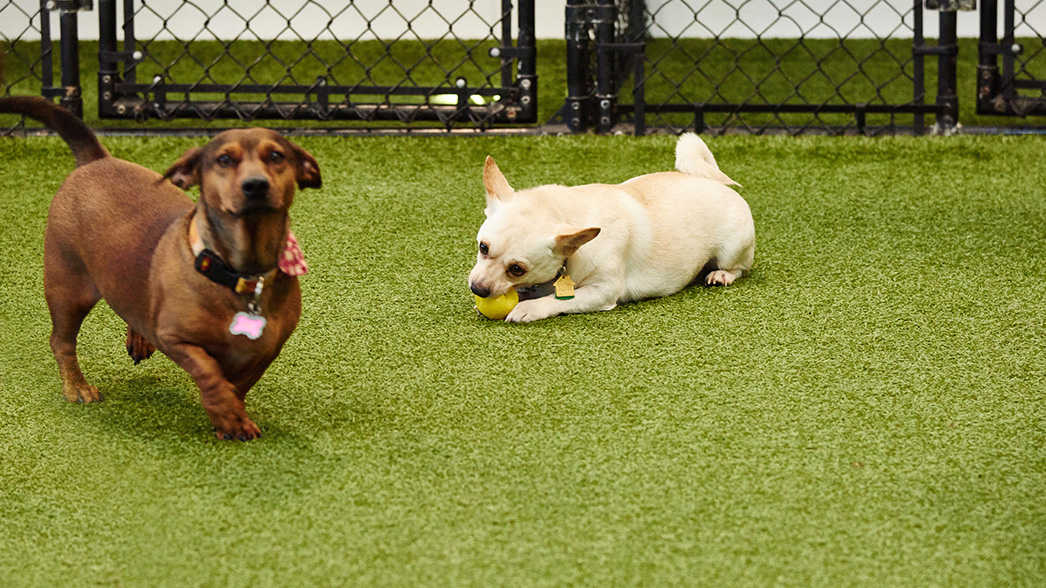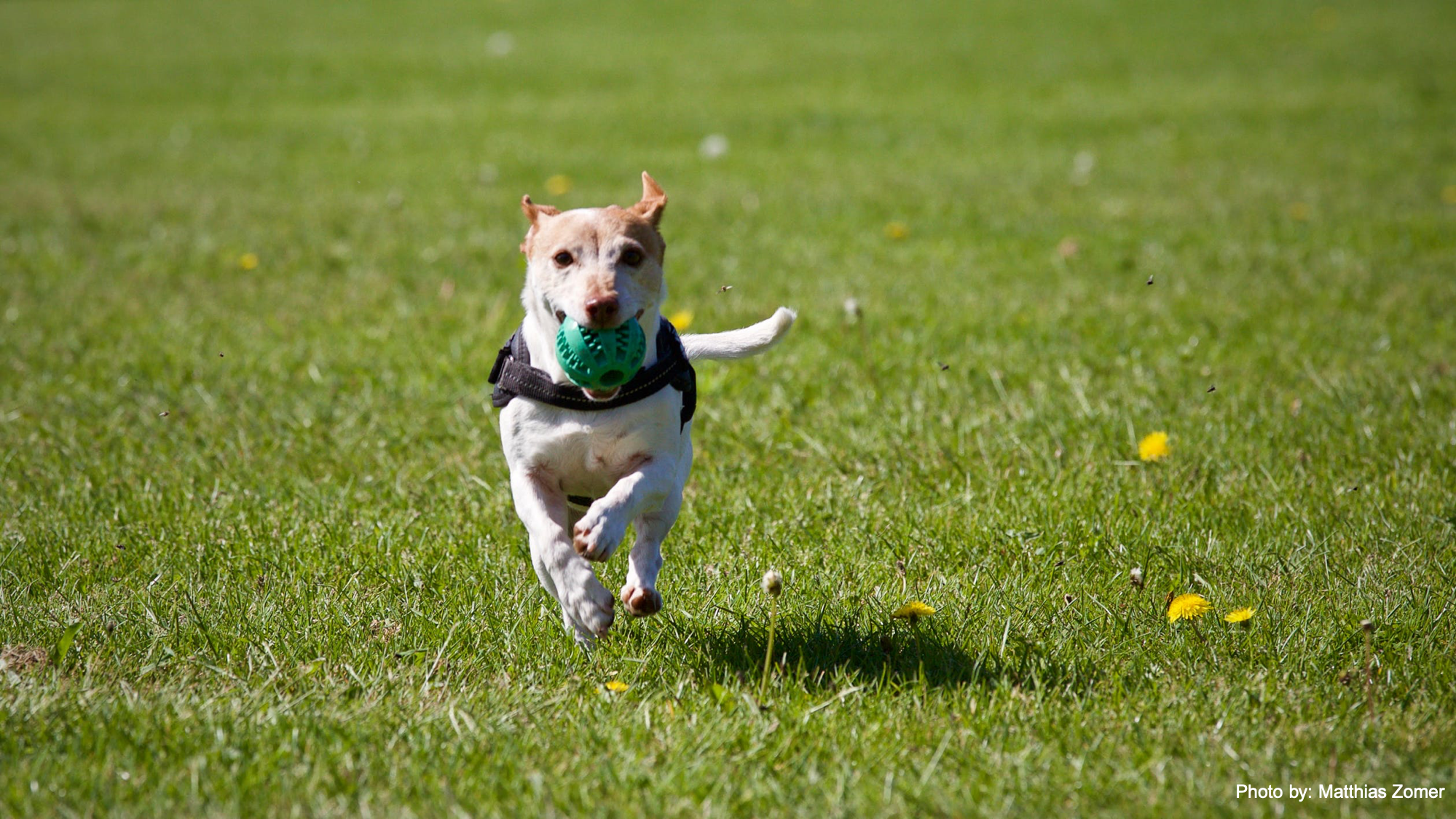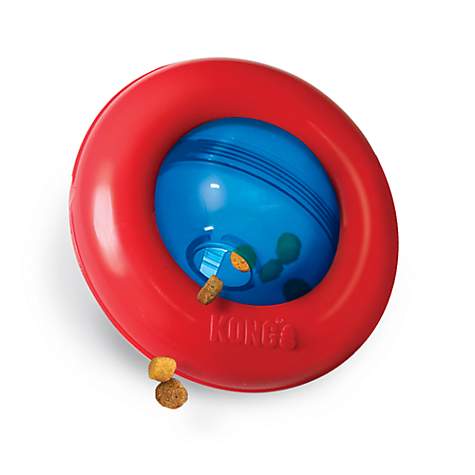
BLOG
PET TOYS: MAKE PLAYTIME FUN AND SAFE
Merritt Milam | February 1, 2020
During 2016, sales of pet toys for dogs and cats exceeded over $1 billion1, with continued growth forecast through 2020. Key areas showing significant increase include sport, fetch, and chew toys with additional interest in durable plush products. But, with so many toys on the market, how do you make sure your pet is getting a safe, pet-friendly toy? To help you make the right choice for your dog or cat, here are some useful tips and recommendations.

Size Matters
Pet toys come in all sizes because pets come in all sizes, too. Make sure you read the labels and find the right size toy for your pet. It’s important to take note of your pet’s jaw size; as toys that are too small can be choking hazards. Small, hollow bones can also get stuck around the pet’s mouth behind the canine teeth. Removing this toy can be difficult and requires sedation. If your pet is young, make sure you replace their toys as they grow so they have the correct size for their age.
Play or Stay
An important factor in your toy selection should be its intended purpose. Is it for play or comfort? If your pet’s activity level is high, look for a toy that is designed for sport or active play. Tennis balls and hard rubber Kong® toys are typically used for vigorous play like fetch and catch. However, make sure you check the toy after each play session to assure that it remains intact. Over time all toys degrade, causing them to be choking and ingestion hazards. Don’t let an $8 toy become an expensive vet bill if it is broken or damaged. Throw it away and get a new one.

Toys designed to encourage pet engagement often provide noise-making options. These can provide lots of enjoyment for your pet but can also be annoying if you don’t like the constant sound the device makes. Choose a toy based on your pet with additional consideration of your preferences. It is important to monitor your pet’s play with this toy; pets may work harder to get to the squeaker/noisemaker and could swallow the device.
If your pet is not a fetcher or as interested in active play, try a comfort toy like a stuffed animal. These toys provide relaxation and comfort while giving your pet something that is NOT your furniture or favorite shoes. A soft, comfort toy can also help your pet focus on THEIR toys…not those your children cherish. Consider plush toys that are small enough for your pet to carry around. As mentioned earlier – be vigilant, check the item for tearing. Worn toys can become a choking/intestinal hazard if pets ingest stuffing materials.
Puzzle Toys
In recent years puzzle toys have become a big hit with pets. These are toys designed to challenge and engage your pet beyond the fetch and catch variety. They help pets learn to solve problems and provide an opportunity for lots of independent play.

A puzzle toy is an interactive device that requires your dog or cat to use problem-solving skills to uncover a hidden treat. These toys come in different levels of difficulty; they provide interaction and help alleviate boredom or possible separation anxiety. Senior pets may also benefit from the challenge these toys can provide because they help stimulate the brain. Consider your pet’s breed and age when making toy selection (with a difficulty range of simple to hard). It is typically better to start your pet at a simple level, then gradually increase the challenge by offering puzzle toys with higher degrees of difficulty.
One note of caution with a puzzle toy…solving the puzzle can require aggressive pawing and movement so make sure you use them on a surface that can take the rough play.
Your Vet Knows Best
Before you decide on a bone as your pet’s toy of choice, we recommend you speak with your vet. S/he can provide helpful information and advice on pet toys, especially products like rawhide, deer antlers, and femur bones. Bones can be effective for teeth cleaning and gum maintenance; however, these can also create choking hazards. Some bones are prone to splinter, causing mouth cuts or producing stomach blockage if swallowed prematurely.
As with all toys, make sure you check the item often for damage and always monitor your pet’s playtime. Read the packaging for recommended pet size and play restrictions.
Offering your pet the right toy can provide hours of play, exercise, and challenge. It can also be just the distraction they need, satisfying chewing behavior positively without damage to favorite household possessions.


